
Arquivo para May, 2018
Agent environments and an example
The example that Norvig and Russel (2010) will give to describe what an environment in 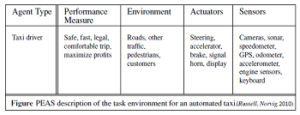 Artificial Intelligence is happy and unhappy at the same time, happy because it has become something real 8 years after the edition of the book, a taxi as a stand-alone vehicle, and unfortunate because there are already cases of accidents with autonomous vehicles.
Artificial Intelligence is happy and unhappy at the same time, happy because it has become something real 8 years after the edition of the book, a taxi as a stand-alone vehicle, and unfortunate because there are already cases of accidents with autonomous vehicles.
What is called environment is described as PEAS (Performance, Environment, Actuators and Sensors) (figure on the side), whose first stage is to design the task environment.
The agent will be different from a software (a softbot or webcrawler), but it is didactic.
The suggested environment was a stand-alone taxi, which at the time was “little beyond the capabilities of existing technology,” but on page 28 will describe a robot with this function, the fortuitous side of the example as the authors say is a ” completely open” and “there is no limit to the new combinations of circumstance that may arise”. (Norvig, Russel, 2010: 40)
What performance measures will be desired: arrive at the correct destination, minimize the correct destination time, fuel consumption and wear, traffic violations, disturbances and safety to passengers and other drivers, and if there are conflicts make decisions (this is one of the reasons for the accident to protect the passengers caused a hit by a passer-by).
The next step is to map an autonomous car environment, it must deal with a variety of roads, from rural lanes and urban lanes to 3, 4 and up to 5 lanes, with lanes, other vehicles, road works, police cars, puddles, and potholes, and should interact with potential and actual passengers.
Actuators for an automated taxi include those available to a human driver: control over the engine through the throttle and control over steering and braking. some optional choices of communication with other vehicles with arrows and even horn, and with passengers who will need voice synthesizers.
The basic taxi sensors will include one or more controllable video cameras so they can see the road; you can increase them with infrared or sonar sensors to detect distances to other cars and obstacles.
The problems of safety and conviviality with human drivers is evident, but thanks to this example of success made in 2010, today we have maps, GPS, road signs, and many others advances.
NORVIG, P.; RUSSEL, P. (2010) Artificial Intelligence: A Modern Approach 3nd ed., Upper Saddle River, New Jersey: Prentice Hall.
AI and artifacts
Norvig and Russel’s book (2010) at the outset brings a table about thinking humanly and 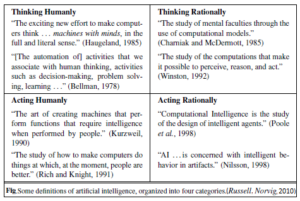 rationally, and acting humanly and rationally, the complete table for Artificial Intelligence is incomplete, even if considering the literature in the area on issues such as autonomy and consciousness.
rationally, and acting humanly and rationally, the complete table for Artificial Intelligence is incomplete, even if considering the literature in the area on issues such as autonomy and consciousness.
Let us first analyze the four main quotations that are in the table of figure 1.1. of the book exemplified next, on Artificial Intelligence.
Thinking Humanly
“The exciting new effort to make computers think . . . machines with minds, in the
full and literal sense.” (Haugeland, 1985)
“ The automation of activities that we associate with human thinking, activities such as decision-making, problem solving, learning . . .” (Bellman, 1978)
Thinking Rationally
“The study of mental faculties through the use of computational models.” (Charniak and McDermott, 1985)
“The study of the computations that make it possible to perceive, reason, and act.” (Winston, 1992)
Acting Humanly
“The art of creating machines that perform functions that require intelligence when performed by people.” (Kurzweil, 1990)
“The study of how to make computers do things at which, at the moment, people are better.” (Rich and Knight, 1991)
Acting Rationally
“Computational Intelligence is the study of the design of intelligent agents.” (Poole et al., 1998)
“AI . . . is concerned with intelligent behavior in artifacts.” (Nilsson, 1998)
I understood from this framework that I am acting rationally, and that definitions and Poole and Nilsson are useful for my studies, but something is lacking, which is consciousness and autonomy, and in this sense the picture is incomplete.
But the question of consciousness is a fact, if we think a person may be aware, but an artifact, not Thomas Nagel’s argument, we can in the opposite sense think of AI “weak” and IA “strong” definitions given by John Searle, to differentiate whether machines are thinking rationally and humanly (strong AI) or just thinking and acting rationally (weak IA).
This led to another field that is today called general IA and deep IA.
NORVIG, P.; RUSSEL, P. (2010) Artificial Intelligence: A Modern Approach 3nd ed., Upper Saddle River, New Jersey: Prentice Hall, 2010.
How do we think it is to think
From the Algebra of 0 and 1 of Boole, through the first computers of Charles Babbage, arriving  at the thoughts of Vannevar Bush and Norbert Wiener of the MIT of the 40, we came across Alan Turing and Claude Shannon, the final question: the machine one day will think
at the thoughts of Vannevar Bush and Norbert Wiener of the MIT of the 40, we came across Alan Turing and Claude Shannon, the final question: the machine one day will think
What we see between Sophia Robot’s investment appeal to the “personal assistants” market is a long history of what it means to think, but the question now due to technoprofets (name given to the alarmists by Jean-Gabriel Ganascia) is inevitable.
Vannevar Bush had a data processing machine in his MIT lab, where he went to work a trainee named Claude Shannon, says James Gleick who was the one who suggested to his student that he study Boole’s Algebra.
Vannevar Bush in his historical text As We May Think, although it does not say as we would think, speaks of the future possibilities of new advances: “Consider a future device … in which an individual stores all his books, records, and communications, and which is mechanized so that it may be consulted with exceeding speed and flexibility. It is an enlarged intimate supplement to his memory.” (Bush, As We may think).
It creates the embryonic idea of a computer that relates text, as it has done in searches since the beginning of the Gutenberg print, but its Memex machine (picture) was already thought of as a vast capacity of records and communications, even if the phone was still nascent in the final years of World War II and communications depended on powerful antennas.
What is certain is that in the end your text little or almost nothing says about what is actually thinking and as it still is today in Artificial Intelligence, what we have done is to expand more and more the capacity of memory and communication, as well as of large amounts of data, now with techniques called Big Data.
Another contemporary tendency is to ask for the autonomy of the machines, the experiments carried out, even with the so-called “autonomous vehicles” are the basis of algorithms and they depend on the decision making of how the human being will do in certain circumstances, in critical cases, like deciding between two tragedies, the choice can be terrible.
A pause for Cannes
Cannes is not very charming, they say here in Europe, but I disagree when looking at some films that are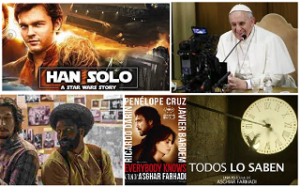 there, I would say that about 5 people caught my attention, but at least 9 could be watched closely, especially by Brazilians. I read anything about 5 and 4 films I knew.
there, I would say that about 5 people caught my attention, but at least 9 could be watched closely, especially by Brazilians. I read anything about 5 and 4 films I knew.
From the filmmaker Asghar Farhadi (Golden Palm in The Past of 2013, The Apartment of 2016 and the Oscar for Best Foreign Film in 2017), his film name Todos lo saben, set in Argentina and Spain has Latin actors known in Brazil, as Penépope Cruz, Jarvier Bardem and Ricardo Darin.
The second one I think is worth it is Wim Wenders’film Francis: Man of His Word (from films like Wings of Desire, City of Angels and Paris Texas) and the main actor no less than Pope Francisco, I still remember that he made a documentary also about brazilian photografic Sebastião Salgado.
The third, for Star Wars enthusiasts and also for the main actor who participated in the two Blade Runner films, Harrisson Ford who played the role of Han Solo in the original series, but now done by Alden Ehrenreich, still very young when the pilot of Millennium Falcon meets his friend Chewbacca and Calrissian (Donald Glover) well before joining the Rebellion.
According to the news reports of the movies, this one was stuck since 2015, but now appears in Cannes, the Brazilian Cacá Diegues The great mystic circus, which tells the story of five generations of a circus family, with Juliano Cazarré, Bruna Linzmeyer, Antonio Fagundes, Jesuita Barbosa and Frenchman Vincent Cassel, apparently promises, is worth checking.
The fifth and last I make a comment, it’s back the racial question brings back Spike Lee, who tells a real story in Blackkklansman, a black cop Ron Stallworth (John David Washington), who infiltrates the Ku Klux Klan and reaches the lead a local group.
Movies that I have little information but the critics are commenting on are: Under the Silver Lake (by David Robert Mitchell, Bad Current), Fahrenheit 451 (Ramin Bahrani), The House that Jack Built (from the controversial Lars von Trier) and The Man who killed Don Quixote (Terry Gilliam) which brings a repagination of the historical novel Don Quixote.
Today I return to Artificial Intelligence theme.
Possible and impossible changes
At other times, the proportions, the changes that occurred in previous stages, also caused a strong impression on the people, but the most influential disruptive technologies, glasses and telescopes, allowed the first printed books to be read, and thanks to the telescopes, the Copernican revolution took place.
impression on the people, but the most influential disruptive technologies, glasses and telescopes, allowed the first printed books to be read, and thanks to the telescopes, the Copernican revolution took place.
The change of paradigms that happens causes astonishment, but what needs to be done in fact, what is possible in a more distant reality and what can happen in the next years, I already indicated in some post, The “Physics of the impossible”, by Michio Kaku (2008).
The author quotes Einstein’s phrase at the beginning of this book: “If an idea does not seem absurd at first, then it will not have any future,” it takes a strong and shocking thought like this to understand that if we should bet on innovation, is the historical moment of this, you must understand that most disruptive things will initially be absurd.
Speaking of more distant things, at the beginning of the microcomputers, it was stated that they would not be useful to many people, the mouse was clumsy and “little anatomical” when it appeared, and there is still a lot of distrust in “artificial intelligence”, not only between laypeople on the subject, among scholars as well, others idealize an “electronic brain”, but neither Sophia (the first robot to have citizenship) and Alexa Amazon really has “intelligence.”
What has to be stopped, and this in Copernicus’s time was worth for the theocentric vision, today there is also an anti-technology sociopathy that borders on fundamentalism, if there are injustices and inequalities they must be combated on the plane in which they are in the social and political.
Roland Barthes said that every denial of language “is a death”, with the adoption of technology by millions of people this death becomes a conflict, first between generations, and then between different conceptions of development and education.
To the scholars I make the recommendation of Heidegger, affirmed on the radio and the television that only half a dozen people understood the process and of course with the financial power can control the publishings of these medias, but also one can answer in the religious field.
The reading of the evangelist Mark, Mc 16,17-18 “The signs that will accompany those who believe will be these: they will cast out demons in my name, they will speak new tongues; If they take snakes or drink any deadly poison, it will not hurt them; when they lay their hands on the sick, they shall be healed. ”
This needs to be updated for the new interpretations of this bible text.
KAKU, M. (2008) The Physics of the Impossible: a scientific exploration of the world of fasers, force fields, teleportation, and time travel. NY: Doubleday.
Trends in Artificial Intelligence
By the late 1980s the promises and challenges of artificial intelligence seemed to crumble Hans Moracev’s 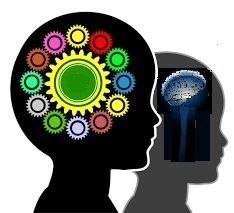 phrase: “It is easy to make computers display adult-level performance on intelligence tests or play checkers, and it is difficult or impossible to give them the one-year-old’s abilities when it comes to perception and mobility, “in his 1988 book” MInd Children. ”
phrase: “It is easy to make computers display adult-level performance on intelligence tests or play checkers, and it is difficult or impossible to give them the one-year-old’s abilities when it comes to perception and mobility, “in his 1988 book” MInd Children. ”
Also one of the greatest precursors of AI (Artificial Intelligence) Marvin Minsky and co-founder of the Laboratory of Artificial Intelligence, declared in the late 90s: “The history of AI is funny, because the first real deeds were beautiful things, a machine that made demonstrations in logic and did well in the course of calculation. But then, trying to make machines capable of answering questions about simple historical, machine … 1st. year of basic education. Today there is no machine that can achieve this. “(KAKU, 2001, p 131)
Minsky, along with another AI forerunner: Seymor Papert, came to glimpse a theory of The Society of Mind, which sought to explain how what we call intelligence could be a product of the interaction of non-intelligent parts, but the path of AI would be the other, both died in the year 2016 seeing the turn of the AI, without seeing the “society of the mind” emerge.
Thanks to a demand from the nascent Web whose data lacked “meaning,” AI’s work will join the efforts of Web designers to develop the so-called Semantic Web.
There were already devices softbots, or simply bots, software robots that navigated the raw data looking for “to capture some information,” in practice were scripts written for the Web or the Internet, which could now have a nobler function than stealing data.
The idea of intelligent agents has been revived, coming from fragments of code, it has a different function on the Web, that of tracking semi-structured data, storing them in differentiated databases, which are no longer Structured Query Language (SQL) but look for questions within the questions and answers that are made on the Web, then these banks are called No-SQL, and they will also serve as a basis for Big-Data.
The emerging challenge now is to build taxonomies and ontologies with this scattered, semi-structured Web information that is not always responding to a well-crafted questionnaire or logical reasoning within a clear formal construction.
In this context the linked data emerged, the idea of linking data of the resources in the Web, investigating them within the URI (Uniform Resource Identifier) that are the records and location of data in the Web.
The disturbing scenario in the late 1990s had a semantic turn in the 2000’s.
KAKU, M. (2008) The Physics of the Impossible: a scientific exploration of the world of fasers, force fields, teleportation, and time travel. NY: Doubleday.
The singularity and the tecnoprofetas
Before Jean-Gabriel Ganascia talked about the Myth of Singularity, the idea that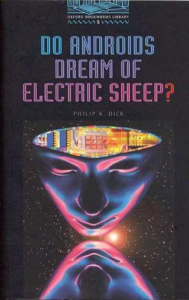 machines would surpass man in human capacity, had already been analyzed by Hans Moracev in his work: Men and Robots – the future of human interfaces and robotics, careful and ethical Ganascia did not fail to quote him.
machines would surpass man in human capacity, had already been analyzed by Hans Moracev in his work: Men and Robots – the future of human interfaces and robotics, careful and ethical Ganascia did not fail to quote him.
There are groups that study the ethical issues that this involves as the Center for the study of existential risk at Cambridge University, but also groups engaged in this project with University of Singularity, with weight sponsors such as Google, Cisco, Nokia, Autodesk and many others, but there are also ethical studies such as the Institute for Ethics and Emerging Technologies that Ganascia participates in, and the Institute of Extropia.
In the account of technoprofetas, the word was coined by Ganascia, a genius prejudice Kurzweil is one of the most extravagant, injected drugs in the body preparing to receive the “computational mind”, but with prediction for 2024 already spoke and now it is for 2045 to 2049 , something that is incredible for someone who is said to have no beliefs, for this fact is very distant if it occurs.
Ganascia thinks this is a false prophecy and Moracev analyzes the difficult real possibilities.
The Gartner institute that works on forecasting predicts neural computing still crawling with predictions for 20 years from now, interfaces like Amazon’s Alexa and Hanson’s Sophia, are human interaction machines that learn things from everyday language but are far from the so-called machines of a general artificial intelligence, because human reasoning is not a set of propositional calculations as they think.
One can argue more this is because people are illogical, but this according to what logic, what we know is that men are not machines and what we ask if machines are men, is the essential question that inspired the series Blade Runner, the book of Philip K. Dick “Do androids skeep dream of electric sheep” from 1968, which inspired Blade Runner.
I think dreams, imagination and virtuality are faces of the human soul, robots have no soul.
World created beyond the imaginary
The story of Claude Shannon, who worked in a MIT laboratory of Vannevar Bush and Alain Turing crosses through World War II, while working on secret projects, which were two sides of the same coin, unaware of one another’s project, the idea of passing the language to a human code, the System X that worked Shannon, and the one of Turing that was to decipher the code of the Machine Enigma capture of the German army.
of Vannevar Bush and Alain Turing crosses through World War II, while working on secret projects, which were two sides of the same coin, unaware of one another’s project, the idea of passing the language to a human code, the System X that worked Shannon, and the one of Turing that was to decipher the code of the Machine Enigma capture of the German army.
Not being able to talk about his projects, speaking at lunches and gatherings in Gödel’s Incomplete Theorem, and the idea of creating a machine that could encode human thought, he said in a joke, “could be a mundane brain like that of the president of Bell Laboratories”, place of secret projects in development.
Bell Labs began as an AT & departament in Washington and later of independent labo of the project’s development (photo above).
The major obstacles to innovation initiatives stem from the mental blocks caused by unproven beliefs, prejudices and perceptions about the possibilities of technology, which are not only strongly alienating, but are inhibitors of creativity and can condemn processes of poor mental development. In spite of the irony of Shannon and Turing with the president of Bell Laboratories, there developed from the first valves, the first transistor that was awarded a Nobel Prize, the telephone systems in their most diverse versions arriving the dialed line and the use of the network for transmission over the internet, and the optimal fiber system, whose first test was done in Georgia.
Also lines of radio and television handsets, the development of the Linux precursor UNIX system, the first solar cells, several Nobel prizes and famous students passed by.
The challenge of pioneers is never simple, critics are always willing to devalue the human effort of progress, Bell Laboratories and other study centers, such as CERN and Research Institute around the world, Brazil has some of them as INPE in São José dos Campos, are central drivers of human creativity and project the future of man.
History of the algorithm
The idea that we can solve problems by proposing a finite number of  interactions between several tasks (or commands as they are called in computing languages) for several problems originates in Arithmetic.
interactions between several tasks (or commands as they are called in computing languages) for several problems originates in Arithmetic.
Although the machine of Charles Babbage (1791-1871) and George Boole’s (1815-1864) Algebra make a huge contribution to modern computers, most logicians and historians of the birth of the digital world agree that the problem of fact was raised by David Hilbert’s second problem (1962-1943) at a 1900 conference in Paris.
Among 23 problems for mathematics to solve, some recently solved such as Goldbach’s Conjecture (see our post), and others to solve, the second problem was to prove that arithmetic is consistent, free from any internal contradiction.
In the 1930s, two mathematical logicians, Kurt Gödel (1906-75) and Gerhard Gentzen (1909-1945) proved two results that called new attention to the problem proposed, both referring to Hilbert, so in fact, there is the origin of the question, roughly, if an enumerable problem is solved by a finite set of steps.
In fact, Gentzen’s solution was a proof of the consistency of Peano’s axioms, published in 1936, showing that the proof of consistency can be obtained in a system weaker than the Zermelo-Fraenkel theory, used axioms of primitive recursive arithmetic , and is therefore not general proof.
The proof of the inconsistency of arithmetic, called Gödel’s second incompleteness theorem, is more complete and shows that some proof of the consistency of Peano’s axioms can be developed without this arithmetic itself.
This theorem states: if the only acceptable proof procedures are those that can be formalized within arithmetic, then Hilbert’s problem can not be solved, in other more direct form, if the system is complete or consistent.
There are polemics raised about these results, such as Kreisel (1976) who argued that the proofs were syntactic for semantic problems, Detlefsen (1990) who says that the theorem does not prohibit the existence of a proof of consistency, and Dawson (2006) that the proof of consistency is erroneous using the evidence given by Gentzen and Gödel himself in 1958 work.
The controversies aside, Kurt Gödel’s participation in the important Vienna circle in the 1920´s before the war exploded, and the subsequent discussions of his theorem by Alain Turing (1912-1954) and Claude Shannon (1916-2001) underline its importance for the history of algorithms and modern digital computer.
Clearing and revelation
Will there be in the whirlwind of answers and anguishes of the man of our time, present more than ever in our daily thinking and also in those who seek the roots of our contemporary difficulties? What is the maze with no way out?
our time, present more than ever in our daily thinking and also in those who seek the roots of our contemporary difficulties? What is the maze with no way out?
The answers are not the same, but the diagnoses are almost always the same, in addition to the pessimistic baumanian liquidity, the diagnosis is the needs of education for life, respect for diversity, income distribution, and man’s empowerment for this future .
Although the majority already feel and see the awakening of this new era, the reactions to the changes that are more than necessary, are urgent, there is greater balance in the planet, control of tax havens, elimination of atomic weapons, and especially respect for diversity.
What keeps us still are the closures in bubbles, which despite the “liquidity” can not be solid, since they are ephemeral and just look around you will find people from other world views, other cultures and other religions, this is solid and definitive.
What Strikes Us Attention Byung-Chul Han in The Expulsion of the Other, I believe is his most recent book, is that the tendency toward uniformity, even the desire for it, stems from not-so-solid values, the demand for a centralizing and ” strong, “the lack of truly open dialogue between religions, cultures, and especially ideologically centralized currents, will not carry out the task of a new, more collective, more dialogic and fraternal society.
There is no single answer, single party, Portugal for example, created the Gerigonça, but still we are slaves of convictions and bets on single totalitarian currents that have failed to much.
The biblical message is old, but it seems to have been little practiced, the time of bondage has passed, says the biblical passage, of Jesus to his fellows Jo (15,15) “No longer do I call you servants, for the servant does not know what your lord. I call you friends, for I have made known to you all that I have heard from my Father “, but slavery is there, says Chul Han:” global communication and of the likes only tolerates the most equal; the same does not hurt! “, this is today’s bondage.

